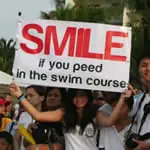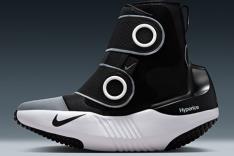"The thing I learned from that was to simplify my nutrition," Legh told Active.com. "People out there are reading so many different articles and talking to different people who have raced, and it starts to get really confusing.
"It's nice to go to that testing and realize that at the end of the day I just have to stay hydrated, match my electrolyte losses and just consume a certain amount of calories. It's nowhere near as complex as it used to be. It makes my results a lot more consistent and my racing a lot more enjoyable."
More: How to Avoid a Nutrition Meltdown on Race Day
One other thing that Legh underestimated was just how much he sweats. His higher sweat rate means he needs to hydrate more—and intake more sodium—than most of his peers. Otherwise, he's at risk for bonking late in the race.
After the epiphany, Legh returned to triathlon and has since put together a remarkable career. He has won almost 90 races (including Ironman Coeur d'Alene in 2004) and has gone back to exorcise his demons at Kona multiple times. Most recently, he competed in the 2013 championship as a 40-year-old.
Legh's in-race nutrition plan for Ironman events is stunningly uncomplicated. After finishing the 2.4-mile swim, Legh gets on the bike and gets about 10K of cycling in before beginning to replenish.
"Your heart rate drops a little bit (after 10K of riding) and you have the ability to consume your food a little better," he explains.
From then on, Legh has three guidelines he strictly follows:
- Take in 75 grams of carbohydrates per hour.
- Take in 1,500 milligrams of sodium per hour (remember, he sweats a lot).
- Drink between 1.5 and 2 liters of fluid per hour.
More: What You Need to Know About Bonking
"The biggest mistake I made and that a lot of people still make is crossing over carbohydrate sources," Legh said. "You can stand at the end and say I didn't like the chews or I didn't like the endurance formula, but the biggest factor is that you crossed the two over. Once you do that, it's too high of a concentration. I try to avoid that crossover.
"Once that's too concentrated in your stomach, the digestion slows down. Then you start to bonk, and your response is to eat more, and it's compounding."
Because of that, Legh will either take the Gatorade Energy Chews with water or the Gatorade Endurance Formula drink by itself.
Legh had to learn the hard way how to make race-day nutrition work for him in an event as demanding as Ironman. He learned most of all that complicated strategies invited nutrition meltdowns, while keeping things simple was a recipe for success.
"I made a lot of mistakes back then," he said, "and I think that's why I had those issues."
More: Nutrition Tips From Ironman Athletes
 Search for your next Ironman or triathlon.
Search for your next Ironman or triathlon.
- 2
- of
- 2









Discuss This Article